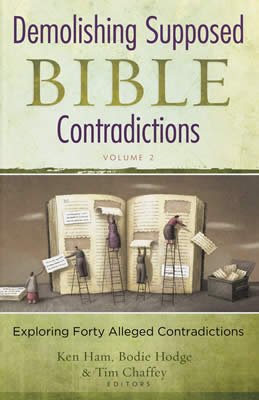Demolishing Supposed Bible Contradictions: Volume 2

Behind every supposed biblical error there is a powerful truth waiting to be found! Explosive and insightful Biblical evidence disproves the toughest of critics while bringing to light the indestructible power of God’s Word.
Only select chapters are available in the online version of this book.
Contents
Portions of this book are reprinted with permission, courtesy of Master Books.
Support the creation/gospel message by donating or getting involved!

Answers in Genesis is an apologetics ministry, dedicated to helping Christians defend their faith and proclaim the good news of Jesus Christ.
- Customer Service 800.778.3390
- Available Monday–Friday | 9 AM–5 PM ET
- © 2025 Answers in Genesis
